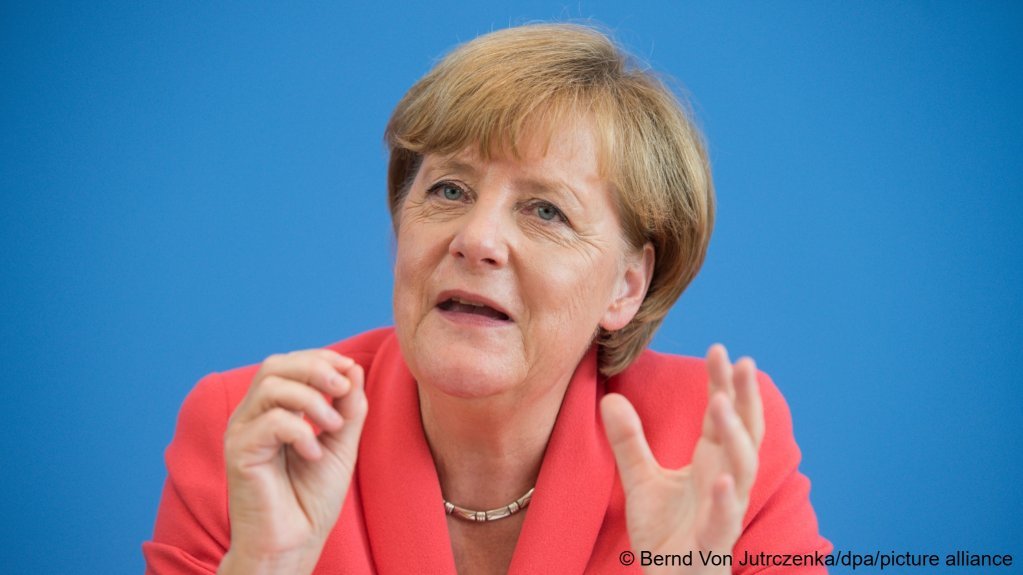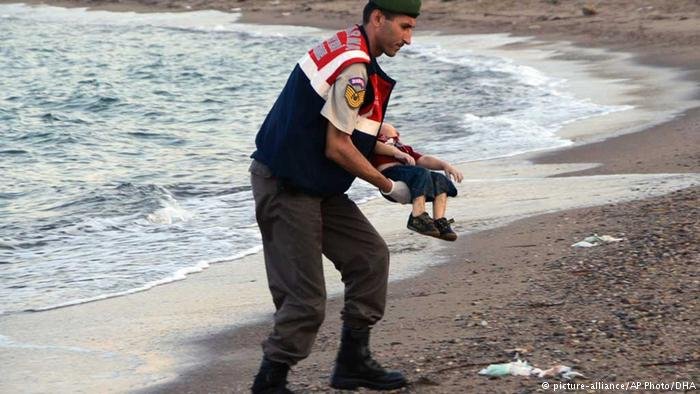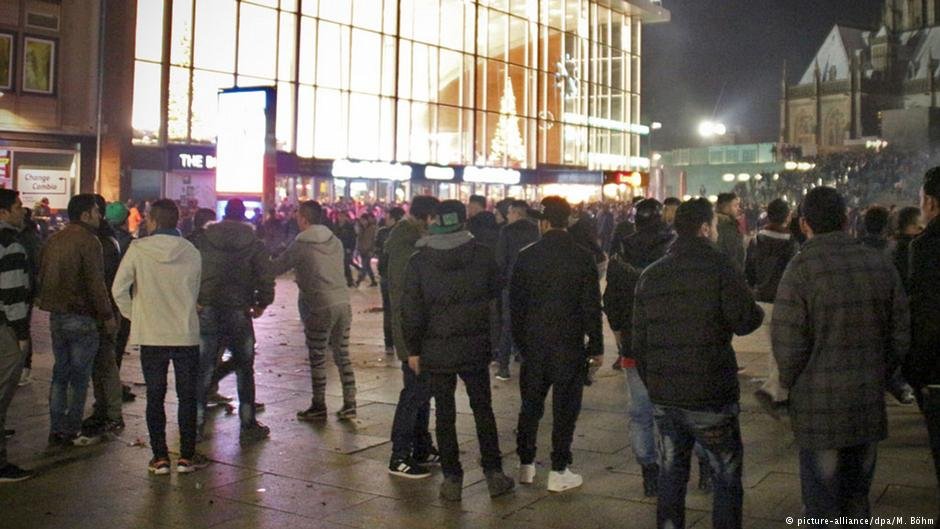The European landscape changed forever when in the late summer months of 2015 thousands upon thousands of people started to reach the EU in search of a better and — above all — safer life. We take a comprehensive look back at the major events that have since had a major impact on the European migration debate over the past decade, assessing how the past will continue to inform the future. This is the first part in a series of five articles, focusing on 2015 and 2016.
"Wir schaffen das."
Translation: "We will cope."
The consequences of these three words might in future be regarded as having had the biggest lasting impact on Europe since the end of World War II — perhaps only second to the fall of the Berlin Wall and the subsequent end of the Cold War.
Former German Chancellor Angela Merkel uttered this short sentence during a press conference on August 31, 2015, telling the world that Germany and Europe at large would confidently manage the growing number of refugees and migrants reaching the continent from all over the world, in particular from war-torn Syria.

Many things have changed in the ten years since. New refugee and migration movements happened, and the continent has witnessed seismic shifts in policies and politics, as well as in attitudes toward migration.
InfoMigrants looks at some of the biggest events of the past decade, exploring whether — and how — Europe did manage to cope in the end.
This article looks specifically at the years 2015 and 2016 as part of a series.
2015: Fleeing war and conflict -- On foot and by boat
Lampedusa: An island gains global attention
The southern Italian island of Lampedusa was never a stranger to migrant boat arrivals. However, over a series of months, it became one of the biggest hotspots of migrant arrivals from northern Africa. In total, over 150,000 people managed to reach Italian soil by sea that year, with a growing number of arrivals on Lampedusa. At the same time, not everyone succeeded in their journey: About 4,055 people are believed to have died across the Mediterranean Sea that year alone. The date of April 18, 2015, still lives in infamy, as only 28 out of about a total of 800 people are believed to have survived one particular shipwreck off the Libyan coast that day. Two years earlier, a similar shipwreck off Lampedusa had already put the Italian island firmly on the map as the potentially deadly gateway into Europe.
Between welcome and rejection: forging a 'refugee crisis'
Meanwhile, another trend started to emerge in the Aegean Sea a little later in the year: Tens of thousands of people fleeing war and persecution -- chiefly from Syria at that time -- also began to hop on unseaworthy vessels after making their way to Turkey. Paying smugglers thousands of euros, they started to head for the shores of Greek islands like Lesbos, Samos and Chios in most instances. Local authorities were taken by surprise by this development, with over 850,000 people successfully crossing into Greece by sea that year alone before continuing on their journeys into Europe, mostly via the so-called Balkan route.
While desperately hoping to reach Europe, at least about 800 people, however, are estimated to have died on the eastern Mediterranean route in 2015 -- including two-year-old Syrian refugee boy Alan Kurdi. The image of his lifeless body washed up on the shores of Bodrum, Turkey, made headlines around the world that year, immediately shifting global attention to what would later become known as the so-called "refugee crisis" of 2015. Another development that featured prominently in 2015 as part of the growing displacement crisis was the plight of Yazidis who tried to flee violence, abuse and persecution at the hands of the Islamic State (IS) terror group in Iraq and in Syria at that time.

Germany caught up between extreme attitudes
Most of the people who entered from Greece, in particular, and to a lesser extent those who had come via Italy, started to make their way into central Europe -- but not without danger on their migration paths: For example, in Austria, 71 bodies were found in the back of a sealed truck that had come from Hungary that year.
In the summer of 2015, the situation along the Balkan route escalated. Tens of thousands of refugees were stranded in Hungary, where the government had erected fences to stop them from traveling onward. In early September, German Chancellor Angela Merkel decided not to turn people away at the border but to allow them to enter Germany, temporarily suspending the Dublin Regulation. That year, 890,000 asylum seekers were registered as having entered Germany, amid a mixed reception, both welcoming and rejecting migrants and refugees. Chancellor Merkel started to face stark opposition not only from opposition parties like the far-right Alternative for Germany (AfD) and anti-migrant movements like PEGIDA but also from within her own ranks. Still, she remained steadfast for a year in her conviction that Germany -- and Europe -- will cope.
Terrorism in Paris, New Year's assaults in Cologne cast shadows
With Merkel and her supporters keen on managing the situation, camps and reception centers were quickly erected all over Europe, in particular in Greece, Italy and Germany, using facilities such as discontinued military barracks, decommissioned airports, school halls, open fields and other locations. And while Europeans were still beginning to wrap their minds around how exactly this sudden influx could be addressed and coped with, further news of hate-fuelled attacks began to dampen the mood of an overall open and welcoming culture.
On November 13, 2015, jihadist terrorists associated with the Islamic State (IS) terror organization attacked several sites in the French capital Paris once more, including the famed Bataclan concert hall and the Stade de France stadium, resulting in 137 fatalities, excluding the attackers. Not long after, New Year's Eve festivities in Germany suffered a setback, as reports emerged of immigrants assaulting women, with at least 1,200 instances of rapes and severe sexual harassment being recorded on that night alone, in particular in the cities of Cologne and Hamburg.

Read Also
Migration and asylum in Europe: 9 events that shaped the decade
2016: Europe's reckoning with reality
Germany: 10 assaults on asylum seekers daily
With the overall accepting mood towards refugees turning sour over attacks linked to extremists in Europe, 2016 saw a spike in attacks on refugee homes and other facilities, especially in Germany. More the 1,000 instances of assaults on refugee and migrant centers were recorded that year in Germany alone, with the majority of them being arson or attempted arson. Scores of people suffered injuries, feeling rejected in their new European host nations.
Individual attacks on asylum seekers also hit records, with the Amadeu Antonio and Pro Asyl asylum support charities recording an average of ten assaults in Germany alone each day. The situation and ensuing rate of violence quickly became untenable and unsustainable, especially with elections slated in Germany the following year.
EU-Turkey deal
Looking for a partner in trying to at least slow down the arrival rate of asylum seekers, the European Union turned to Turkey. In exchange for 6 billion euros in total over several years, the EU launched a cooperation with Turkey to stop migrants from departing, which became known as the EU-Turkey deal. Initially, the agreement was slow to respond to the high rate of departures — partly due to severe domestic issues in Turkey that year, including a bloody coup attempt.
But over a series of years and with a growing involvement in the Aegean Sea of the EU's external border agency Frontex, the number of migrants crossing from Turkey to Greece eventually became somewhat more contained. This would only be the first of several deals the EU would sign directly with other states to limit the number of people reaching the bloc.

Rise in far-right parties
In 2016, Europe saw a noticeable rise in far-right and nationalist parties, from the National Front in France to the AfD in Germany to The League party in Italy and the FPÖ in Austria. These parties gained in popularity by capitalizing on concerns over migration, terrorism, and dissatisfaction with EU institutions, and positioned themselves as defenders of national identity and security.
The isolationist and protectionist currents were only further emboldened by the UK's populist vote to leave the European Union (commonly referred to as "Brexit") and the ascendence to the US Presidency of Donald Trump.
Read AlsoWorld Refugee Day: Iconic images of the refugee crisis
➡️To follow this series, please click on these links:
2015 - 2016: Fleeing conflict and Europe’s response (Part 1)
2017 - 2018: 'Fortress Europe' and new routes (Part 2)
2019 - 2020: More displacement and COVID-19 (Part 3)
2021 - 2022: New dynamics, wars and change (Part 4)
2023 - 2025: Tragedies, opportunities and migration management (Part 5)
Please note that this listicle is not exhaustive of all events that took place since 2015 relating to immigration to Europe. We try to address all individual developments involving migrants, refugees and asylum seekers as well as attitudes and policies related to migration, as part of our ongoing rolling coverage.
